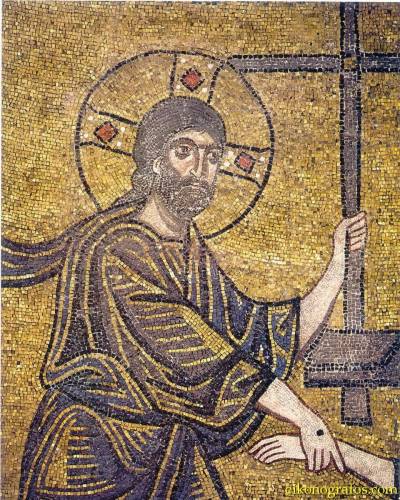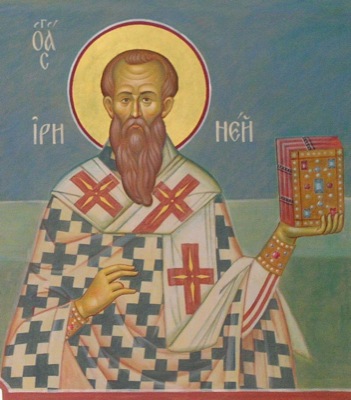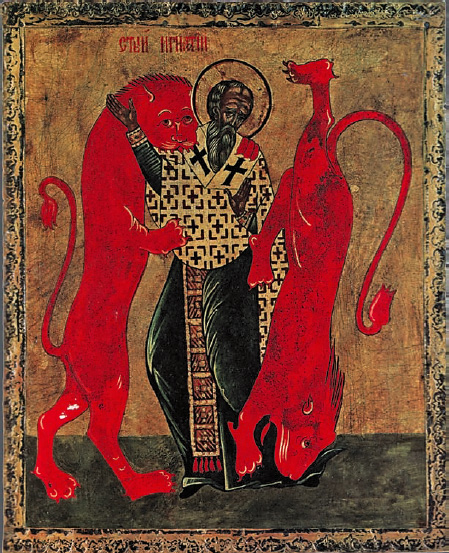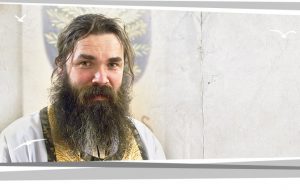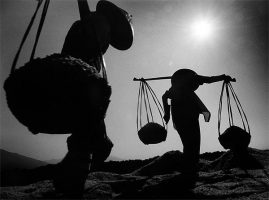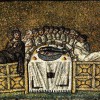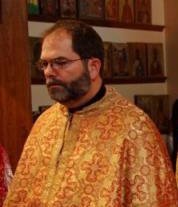 What is man, that Thou art mindful of him? Or the son of man, that Thou visited him? (Psalm 8:4)
What is man, that Thou art mindful of him? Or the son of man, that Thou visited him? (Psalm 8:4)
We live in a world full of men and women who are trying to understand themselves. The existential questions looms large: Who am I? Why am I here? What is the meaning of my existence? How can I live a fulfilling life? How can I be all that I was meant to be: a “real live human being”?
There have been many attempts to answer this question throughout history, up to our own day, both in the arena of words and ideas and in life as it is actually lived. For the Platonists, the pursuit of “the Good” was the purpose of life, and all were bound by duty to pursue it; reason was the method by which it was attained. The Cynics taught that humanity’s purpose lay in living “according to nature.” For the Stoics, the meaning of life was found in “freedom from suffering” through being objective and having “clear judgment.” Then, of course, there are the Nihilists who, basing themselves on disbelief in God, argue that there is no meaning or purpose. Certainly the world around us is full of people trying to find purpose and meaning through material things, sexual experiences, success at work, or other endeavors.
But all of these ideas are inadequate and fall woefully short in addressing the question of our existence and the problem of finding meaning in our life. For at their root, no account is given of the reality that none of us asked to be born into this world or that none of us had any say on the conditions of our existence. What then? Do we concede to atheists that we are simply the result of some meaningless, random accident?
The Christian Faith gives the only adequate answer to this existential dilemma: it answers it not only adequately, but fully. The question itself is actually a response to the pre-existent answer and not, as is usually the case, the other way round. As St. Irenaeus put it: “Since the Savior existed already, the one to be saved had to be brought into existence, so that the Savior should not be in vain.” [1] Christ is not a “solution” responding to “the mess that humans made.” Rather, humanity is the result of Christ, the Eternal Word of God.
So Christianity has an answer to the existential question. But the Christian answer is often not given adequately; such attempts either do not go far enough in addressing the question or they “miss the mark” somehow, quite often by providing an answer that does not really reflect the Truth of the Gospel. Even the disciples, who walked with Christ, continued to get it wrong. James and John and their mother got it wrong. As a liturgical text puts it: “not being equal to the mystery of Thine ineffable dispensation, she begged Thee to grant her two sons the honors of a temporal kingdom.” [2] It was not temporal honors that Christ was offering: this is not what makes one truly “human.” Or sometimes Christians try to answer questions that no one is even really asking.
But Christianity does preach the Gospel, the “good news.” What is this “good news?” What is the answer given to the question of my existence?
It might be assumed that, in answering the question of man’s meaning, one would start by going back to “the beginning,” that is, to the Book of Genesis, the “book of the beginnings.” Undoubtedly, that is where most attempts at answers do begin. But this is not enough. It falls short because for the Christian, as St. Irenaeus has stated, Adam is not the prototype for man. [3] Rather, the Prototype for humanity is Christ (although referred to as the “Second Adam”), the Pre-eternal Word of God Incarnate. St. Paul refers to Adam as the type of the One who was to come (Romans 5:14). Adam, while existing before his son, “the man Jesus,” in human history, was really created by Him, the Eternal Word. Thus, it is to the Cross that the Christian and the one who would attempt to understand the Christian answer must first turn to find out how to become a true human being.
“Aha!” the astute reader might exclaim. “You’ve made a leap, from ‘Christ’ to ‘Cross,’ without accounting for it. Why must we turn to the Cross and not to the manger of His Nativity or the River Jordan of His Baptism?” This is because, for the Christian, this is not a leap: Christ and His Cross are inextricably joined. It is only through the Cross that we can know Him. Ever since St. Paul, Christians have been determined not to know anything among you, save Jesus Christ, and Him crucified (I Corinthians 2:2). Paul and all those in the Apostolic Office following him have delivered to you as of first importance what I also received, that Christ died for our sins according to the Scriptures (1 Corinthians 13:3). Christianity is rooted firmly in Christ and His death on the Cross.
The rest of the narrative in the Gospels also points to, and is also inextricably bound up with, the Passion and the Cross. Fr. John Behr, speaking about Mary appearing in the light of the crucified and risen Lord, states:
The infancy narratives of Matthew and Luke are already told as a proclamation of the Gospel (in the full sense)… This is also a connection made explicit in the icon for Nativity: in the icon, Christ is depicted, not in a house or in a stable (as historicizing depiction of the infancy narratives would require), but wrapped in swaddling clothes as a corpse (with a cross on his halo), laid in a manger as food (for us who eat the body of Christ), and with the manger positioned in a cave embracing in its shape the Virgin, just as the crucified Christ was placed in a newly hewn (i.e., virgin) cave owned by the other Joseph. [4]
In this light we can understand Christ’s response to James and John (and their mother), that He did not offer them the honors of a temporal kingdom. As a liturgical text states: “But instead, Thou didst promise Thy beloved that they should drink the cup of death, the cup which Thou didst say Thou wouldst drink before them for the purification of sins.” [5]
Thus, the Word of God made flesh is central to understanding man’s creation. The Cross is the light by which we see and understand not only Jesus Christ, the Son of God, but also what it means for us to be human.
St. Paul acknowledges that this seems ridiculous to those who do not believe: For the message of the Cross is foolishness to those who are perishing, but to us who are being saved it is the power of God (1 Corinthians 1:18). He continues: But we preach Christ crucified, to the Jews a stumbling block and to the Greeks foolishness, but to those who are called, both Jews and Greeks, Christ the power of God and the wisdom of God (1:23-24). The Cross is foolishness and a stumbling block to many, but to the Christian it is power and wisdom. The Cross is at the heart of the Christian message: it is there that we must begin in seeking to understand: What is man, that Thou art mindful of him? (Psalm 8:4).
At the Cross, according to the Gospel of St. John, Christ exclaims: It is finished! He then immediately gives up the Spirit (John 19:30). What is finished? St. John has Pilate give us a clue just a few verses beforehand: Behold, the Man. It is in this light that we can turn to the account in the book of Genesis to see what was begun when God says: Let us make man in our own image (Genesis 1:26).
According to St. Irenaeus, the work of God is precisely the “creation of human beings”: “Now the work of God is the fashioning of man. For, as the Scripture says, He made man by a kind of process: And the Lord took clay from the earth, and formed man.” [6] This “process” is begun by God when He says, “Let us make,” and is ended with the incarnate God’s declaration from the tree that it is indeed “finished.” This process is God’s “taking clay and forming man” and our whole life is one of learning to be clay in God’s hands. C.S. Lewis put it this way: “And that is precisely what Christianity is about. This world is a great sculptor’s shop. We are the statues and there is a rumour going round the shop that some of us are some day going to come to life.” [7] I am not sure there is a “rumor going around,” but I do think the word picture does illustrate quite well what St. Irenaeus is saying: that God created the “form” of man, and later sequentially breathes life into him. The “form” is incomplete: it is a work in progress, and therefore lacking. But God is the Creator who completes His creation.
At the Cross the work of God “is finished.” It is then, when Christ is lifted upon the Cross, that this project, which was begun on the day of creation when God took earth and breathed into it, is completed. This becomes the framework, the paradigm, by which we understand what a human being is. Now that we have been given a Prototype to model ourselves after, and to measure ourselves by, how is it that we, too, become human?
We, too, begin with death. Death is the culminating event for each of us; it is the only thing that all of us hold in common. Death on a cross in the first century would not seem all that special or unusual. What was special and unusual was not only “Who” it was who died – the eternal Word of God Himself – but rather the manner in which He died. This is expressed beautifully in a priestly prayer of the Liturgy of St. John Chrysostom: “on the night on which He was betrayed – or rather in which He gave Himself up for the life of the World.” [8] It was not a matter of someone being killed, although at first glance it might look that way. This death was one of “offering.” He “offered Himself” for the life of the world. The Word Incarnate gave Himself up of His own free will.
Christ’s answer is to call us to the same manner of death: If any man will come after me, let him deny himself, and take up his cross daily, and follow Me (Luke 9:23). As Christ finished God’s creative work of creating man by His own “lifting up,” we, too, must do the same to become complete human beings. In order for us to become complete we must, like Christ, be willing to sacrifice ourselves. It is through this voluntary act that the “mud which suffers” [9] becomes a human being, no longer just clay.
How is this done? Is one to hew out one’s own cross of wood and be nailed upon it? Of course not: it is not the physical details of Christ’s death that we are called to imitate, but rather His voluntary assent to suffering and death.
The Cross of Christ, and the need to bear one’s own cross, is central to the epistles of the Apostle Paul. He writes: I have been crucified with Christ: it is no longer I who live, but Christ Who lives in me: and the life which I now live in the flesh, I live by faith in the Son of God, Who loved me and gave Himself for me (Galatians 2:20). His personal crucifixion was, like Christ’s, willingly embraced and freely accepted. But this did not come easily to him.
The man Saul was a persecutor of Christians but, after encountering the risen Christ on the road to Damascus, his life became one of imitating Him. This was big, for as he states, the cross is skandalon, a scandal or “stumbling block” to the Jew (1 Corinthians 1:23). And Paul was not just a Jew; he was a Pharisee. To the Jew, the Cross was a failure. How could God’s Messiah be killed in such a shameful, humiliating manner? As Pope Benedict XVI put it: “For the Jews, the cross contradicts the very essence of God, who has manifested himself with prodigious signs. Therefore, to accept the cross of Christ means to undergo a profound conversion in the way of relating with God.” [10] Indeed, St. Paul now said: I die daily (1 Corinthians 15:31), for it was given to him to see the Cross as the revelation of the power of God (1 Corinthians 18:24). To cite Benedict again:
Centuries after Paul, we see that the cross, and not the wisdom that opposes the cross, has triumphed. The Crucified is wisdom, because he manifests in truth who God is, that is, the power of love that goes to the point of the cross to save man. God avails of ways and instruments that to us appear at first glance as only weakness. The Crucified reveals, on one hand, the weakness of man, and on the other, the true power of God, that is, the gratuitousness of love: Precisely this gratuitousness of love is true wisdom. [11]
This is an irony, paradox, and antinomy that saves those who believe (1 Corinthians 1:21). It puts to shame the wise and the mighty. The wise and the mighty miss it. But the humble – those who are willing to crucify their mind with their flesh – are granted to see it: the power of God revealed in the weakness of man. Of those who “don’t get it,” St. John Chrysostom says: “It is the mark of them that perish not to recognize the things which lead to salvation.” [12]
The early martyrs give testimony to this “Way of the Cross.” St. Ignatius of Antioch wrote these words to the Church at Rome regarding his impending martyrdom: “The pains of birth are upon me.” [13] This reflects St. Paul, who wrote: My dear children, for whom I am again in the pains of childbirth until Christ is formed in you” (Galatians 4:19).
As the Christian follows Christ to martyrdom, he is about to give birth to – or to be born as – the completed human being he was created to be. St. Ignatius writes that he desires to become “food for the wild beasts, through which I can attain to God. I am the wheat of God and I am ground by the teeth of wild beasts so that I may be found the pure bread of Christ.” He says that if that is allowed to happen, “then I shall be truly a disciple of Jesus Christ, when the world will not see my body at all… Pray to Christ for me that through these means I may be found a sacrifice to God.” This is when he will be a true disciple. This is when he will give birth to a true human being: when he is voluntarily offered as a sacrifice to God. When he, like Christ, bears his own cross and is lifted upon it.
St. Ignatius then writes: “If I suffer I shall be Christ’s freedman and in him I shall rise free… Fire and cross, packs of wild beasts, cuttings, rendings, crushing of bones, mangling of limbs, grinding of my whole body, wicked torture of the devil – let them come upon me if only I may attain to Jesus Christ.” [14] He begs Christians not to prevent his martyrdom, for it is only “when I arrive there that I shall be a man.” Can St. Ignatius make it any clearer? It is at his martyrdom that he fully and finally becomes a “man.”
He continues: “Let me be an imitator of the passion of my God. If anyone has Him within himself, he must understand what I want and sympathize with me, since he knows what drives me on.” He desires to bear his cross in imitation of Christ and he realizes that only those who are in the same process of being made “man” can fully understand what is motivating him.
This theme runs consistently through the early martyrs: from Blandina to Perpetua, from Polycarp to Justin. True life and meaning are found in dying for Christ. To die for Christ is to be born again into new life. In the act of martyrdom, a “real live human being” is born.
If this is the case, the world is full of stunted human beings – or, as C.S. Lewis put it, “men without chests.” [15] How many have completed the course of their creation? Where are those who have allowed themselves to be clay in God’s hands? When the Son of Man returns, will He find faith on earth? (Luke 18:8). Those that do follow Christ in picking up their cross and dying to their selfish desires become fully human.
According to Archbishop Anastasios of Albania, this has corporate dimensions:
This is precisely why Christians constantly keep uppermost in their minds the reality of the cross: the reality of the passion, of outward failure, which is a permanent fact of life and a focus of the Church’s contemplation. Patient acceptance of the cross is a way to embrace all of humanity’s pain and the reality of life around the globe. [16]
Bearing one’s cross not only makes individuals human; it fills the world with the hope of unity:
But this tragic dimension of the cross, which casts a shadow over our lives, is ceaselessly illuminated by an unswerving eschatological hope, a hope that is filled with the mystical light and power of the Resurrection, and this lends strength to the creative struggle of the faithful. Our final and all-embracing victory – world unity, in the present case – does not belong in the present. It is coming, however. Our foretaste of this victory in the present fills us with peace and fortitude. The reality of Christ transcends history. [17]
We are all in the process of being fashioned by God. What He started on the day of creation He intends to finish. We can cooperate with Him – thereby becoming real live human beings – by embracing the particular cross He gives us and by learning to be clay in the Potter’s hands.
Author’s notes:
[1] St. Irenaeus Against the Heresies 3.22.3.
[2] First aposticha in Tone 5, Bridegroom Orthros of Great and Holy Monday.
[3] The traditional word “man” will be used in this piece as representing all humanity, alongside of the more current usage of “human beings,” because the traditional usage is closer to the Greek “anthropos” and a more beautiful and poetic way of expressing the reality that includes every man, woman, boy, girl, and infant who has ever lived. In Scripture, Jesus is the “Son of Man,” not the “Son of Human Being.” Yet the newer term is also used for clarity.
[4] John Behr. The Mystery of Christ: Life in Death (Crestwood, NY: St. Vladimir’s Seminary Press, 2006), 136.
[5] First aposticha in Tone 5, Bridegroom Orthros of Great and Holy Monday.
[6] Against the Heresies, 5.15.2
[7] C. S. Lewis, Mere Christianity (Harper Collins, 1952) 159.
[8] Anaphora of the Divine Liturgy of St. John Chrysostom.
[9] Barnabas 6:9.
[10] http://www.zenit.org/article-24102?l=english
[11] Ibid.
[12] St. John Chrysostom, Homily IV.
[13] St. Ignatius of Antioch, Epistle to the Romans 6:1.
[14] Ibid. 5:3.
[15] C. S. Lewis, The Abolition of Man (New York: Collier Books, 1955), chapter 1.
[16] Archbishop Anastasios (Yannoulatos), Facing the World: Orthodox Christian Essays on Global Concerns (Crestwood NY: St. Vladimir’s Seminary Press, 2003), 42
[17] Ibid.
Source: Bonovox












